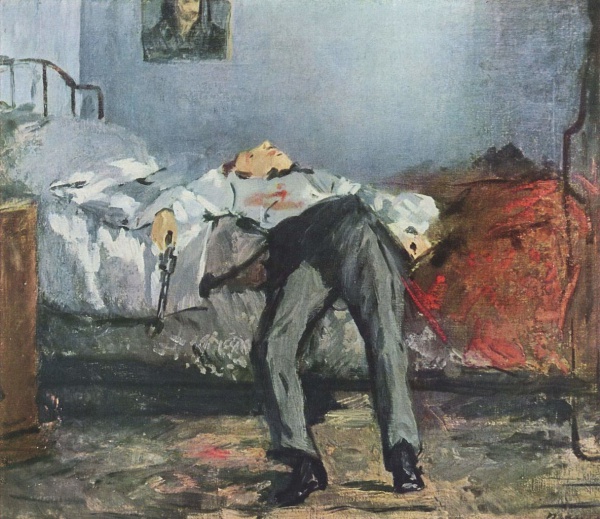Facts About Le Suicidé
"Le Suicidé" is a small yet compelling oil painting by Édouard Manet, created between 1877 and 1881. Despite its powerful impact, it has not garnered significant attention within Manet's oeuvre, primarily because art historians have struggled to contextualize it within his broader artistic trajectory.
The painting portrays a man who appears to have shot himself, slumped over on a bed with a gun still in his hand, surrounded by minimal furnishings. Unlike earlier depictions of suicide, Manet eschews typical dramatic elements and moral messages. Instead, he opts for a stark, straightforward portrayal.
Some experts draw parallels between the realism in "Le Suicidé" and the work of Gustave Courbet, particularly his painting "A Burial at Ornans" which also explores themes of death. There has even been speculation that Manet may have been inspired by a real suicide, possibly one that occurred in his own studio or involving an artist mentioned by Émile Zola. However, more recent critics have cast doubt on these theories.
Manet's distinctive approach to the subject of suicide may be his way of rejecting traditional academic norms. Historically, themes of this nature were reserved for grand, heroic, or idealistic narratives, such as Jacques-Louis David's famous painting "The Death of Socrates." In contrast, "Le Suicidé" does not focus on a specific time, place, or heroic figure. Its simple, unembellished composition would have been quite shocking to contemporary viewers, marking Manet's bold departure from the artistic conventions of his era.

 Liechtenstein
Liechtenstein